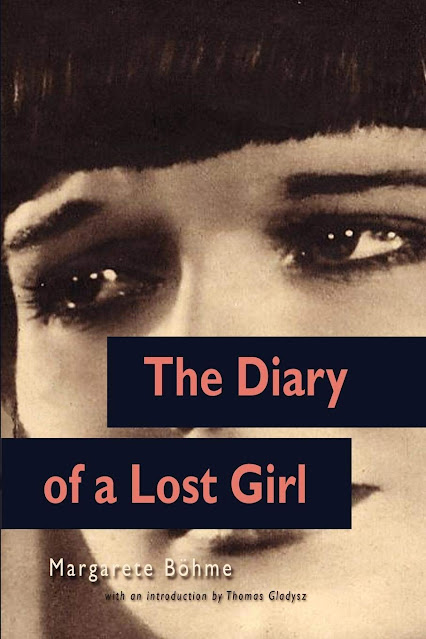Asta Nielsen was an early European film star in whom Louise Brooks had a special interest. (For more about Asta Nielsen and her remarkable career, check out her Wikipedia page
HERE, or better yet, check out this excellent article "
Asta Nielsen - #Bosslady" by Nanna Frank Rasmussen. The short introductory film about Nielsen at the top of the page is surprising, even a bit shocking.)
Brooks' interest likely stemmed from the fact that the two actresses had a few things in common. I don't know that they ever met, but they both worked under the same director, G.W. Pabst. Late in her career, Nielsen was featured in Pabst's Joyless Street (1925), which starred Greta Garbo. Brooks, of course, starred in two Pabst films, Pandora's Box (1929) and Diary of a Lost Girl (1929). Another bit of overlap came in the form of a woman named Josephine Müller, who was Brooks' maid in Berlin; according to Brooks, Müller had once worked for Asta Nielsen, and in her essay "Pabst and
Lulu," Brooks notes that her German maid thought Nielsen the best
actress in the world.
And of course, both actresses also wore their hair short throughout their life, with Nielsen at times sporting bangs and a helmet-like bob similar to Brooks.
However, the most notable thing that the two actress had in common is that they both played the same character, Lulu. Brooks played Lulu in Pandora's Box, while Nielsen played Lulu in Erdgeist, or Earth Spirit (1923), a German film directed by Leopold Jessner. We know from Brooks' notebooks that Brooks viewed Erdgeist on June 15, 1959 at the George Eastman House in Rochester, New York. Interestingly, when Brooks recorded the fact she had seen the film, she referred to it as Loulou. If you want to see the Nielsen film, hurry on over to the Danish Film Institute where you can stream Erdgeist online for free. These days, this 69 minute film is seldom shown in theaters or at festivals, so, this is a great opportunity to see a significant silent film. BTW, this version has Dutch intertitles with Danish subtitles. But no worries, just watch it for the visuals and you will be able to follow it along. Otherwise, hard-core Lulu devotees might also want to catch this 64 minute version of Erdgeist on YouTube which features Russian intertitles.
Speaking of screenings and festivals, the British Film Institute is mounting a multi-film, two part retrospective in February and March curated by film critic / film historian / author and friend to the LBS Pamela Hutchinson. "‘Die Asta’ was silent cinema’s Danish diva," notes the retrospective webpage, "whose mesmerising performances helped invent modern screen acting." More information HERE.

As Hutchinson notes, "A single tear from Nielsen, a single flicker of her mouth, says more
than any superimposed effects of suffering,’ said German director
Leopold Jessner. ‘She was and is the great actress, the canvas that
makes dignity visible.’ Almost an overnight success when she appeared in
1910’s melodrama The Abyss as a young woman torn between passion and
duty, Nielsen soon became Europe’s greatest film star – though her
transgressive films would be censored in the US. She was widely
celebrated for the emotional depth and sensuality she could convey with
her modern, naturalist style and her deft use of gesture, whether in
comedy or tragedy. This month we’ll explore her first films, made in
Denmark and Germany, which reveal her to be a screen actress of
boundless range, with unique sensitivity and unforgettably hypnotic
eyes."

For those interested, here is an LBS blog from 2017 about Nielsen which contains the scans of a vintage German language booklet on the actress noted for her large dark eyes, mask-like face and boyish figure who often portrayed strong-willed passionate women trapped by
tragic circumstances. Sound familiar?















